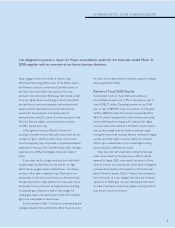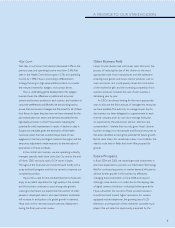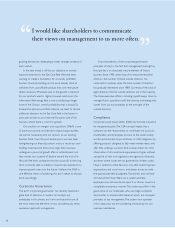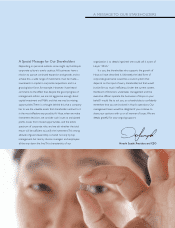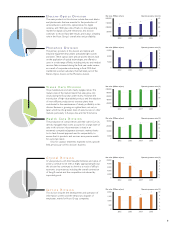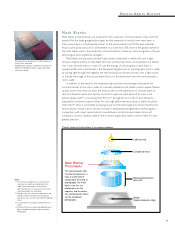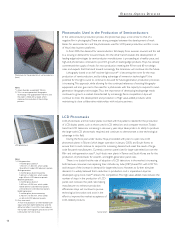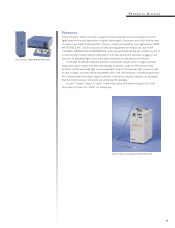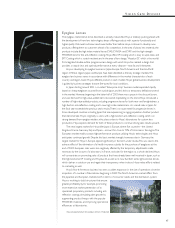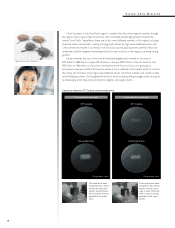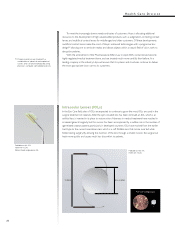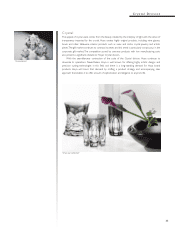Pentax 2005 Annual Report Download - page 15
Download and view the complete annual report
Please find page 15 of the 2005 Pentax annual report below. You can navigate through the pages in the report by either clicking on the pages listed below, or by using the keyword search tool below to find specific information within the annual report.
Glass Disks for HDDs
To ensure that data are not damaged when laptop computers are carried, the HDDs inside
must have high shock resistance. These hard disks utilize glass disks, which are much more shock
resistant than the conventional type, usually made of aluminum. Hoya enjoys the largest share of
the global market for glass disks.
The glass disks sizes produced by Hoya can be broadly divided into 3.0-inch, 2.5-inch,
1.8-inch, and 1.0-inch categories. The 2.5-inch disks are widely used in laptop computers. About
80% of such disks are used in laptops, and the remaining 20% are used in external memory
drives, car navigation systems and games machines. The 3.0-inch disks are produced for use in
servers, where high levels of reliability are demanded. The market for 1.0-inch and 1.8-inch disks
has recently been expanding rapidly. These disks are built into portable music players, which
allow one to download and listen to music data.
During the fiscal year under review, production of small-size HDDs for portable music
players began in earnest at Hoya. Hoya had developed mass production technologies ahead of
the competition, both for the small-size glass substrate and the glass disks coated with magnetic
layer (media). In the fiscal year under review, these technologies contributed to the increased use
of HDDs.
Currently, most of Hoya’s production of glass disks takes place in Southeast Asia. Polishing of
the glass plate to produce the substrate is performed at plants in the Philippines and Thailand.
The finished product (media) is manufactured in Singapore. In March 2004, Hoya increased its
supply capacity through the acquisition of the business of Nippon Sheet Glass Co., Ltd., including
its production facilities. Anticipating further increases in demand as a result of the growing
number of applications for these disks, Hoya has already begun building a third glass disk plant in
Vietnam, and also plans to boost investment in existing plants.
Electro-Optics Division
Glass disks for HDDs (substrates and media)
Glass disks mounted on notebook computer (image)


